On the night from January 5th to 6th - the Dreimulnåcht - an old and humpy little woman with a headscarf, pulled deep over her face, wanders through the wintery landscape, knocking on the front door. Silently she rushes in and checks if the room has been swept clean and everything is in order, then without a word she pours apples, tangerines, nuts and sweets on the floor and leaves. In midwinter, the little ones are told the story of the "Budelmutter". Then it gets very quiet around the table...

Two Budelütter on their way in Schachen near Vorau (picture by Franz Josef Putz)
The Joglland
The Joglland is an extensive area, a wooded low mountain range area in north-eastern Styria between Wechsel, the upper Feistritztal, the Safenbach and the Hartberg-Friedberg area. It forms a subgroup of the marginal mountains east of the Mur. To the north lies the Semmering region, to the northeast the Bucklige Welt region (Lower Austria). To the northwest lie the Fischbach Alps, and behind them the lower Mürztal. To the west and southwest stretches the Grazer Bergland. To the south follows the East Styrian Hills, and to the southeast the Southern Burgenland – the latter both already part of the Alpine foothills in the southeast against Pannonia.
The highest elevations of this area with low mountain range character are, in addition to the peaks of the Wechsel massif – such as Hochwechsel (1742 m), Herrenstein (1448 m) and Hochkogel (1314 m) – the Wildwiesen (1254 m), the Masenberg (1261 m) and the Rabenwaldkogel (1281 m). The area is drained by Feistritz and Lafnitz.
In the old cultural landscape, there were and still are primarily rural settlements in various forms. A typical form of settlement in the area is the single settlement ("Einzelhöfe" = single homesteads) or scattered settlement ("Gehöftgruppen" = homestead groups). The village represented an economic unit, agricultural production formed an important part of the acquisition. Villages and markets developed in convenient places such as traffic crossings of trade routes, valley exits or transition from mountains to plains.
In the past, wood and flax were important economic assets in Joglland.

The Joglland is a vast landscape with mainly individual farmsteads and farmstead groups, in the background the last major elevations of the Eastern Alps Veitsch, Schneeberg and Rax

The village that gives its name to Joglland – St. Jakob im Walde
Dreimulnåcht ("Three Meals Night")
The last night of the Twelfthtide, the Dreimulnåcht, is the strongest and most important of all rough nights for us. As a child, I always recognized these special days by the fact that there was only a small meal for lunch, since the good, festive meal only took place in the evening. That was a thick soup for the special rough nights on Christmas Eve, New Year's Eve and Dreimulnåcht as well as on Holy Saturday. On days like this, the tension was already rising at noon, as to what would happen in the evening!

Vorau open-air museum with typical house and courtyard construction in Joglland
Dreimulnåcht – Smoking out House and Yard
The action in the Dreimulnåcht begin at dusk. On this day, the animals can talk in the barn as on Christmas Eve and on New Year's Eve. Even before dusk set in, the father or mother called the family together. Then house and yard were smoked out and we prayed. For this purpose, the mother prepared the incense vessel: this was an old large oil can, from which she built a small oven, filled it with embers from the oven and some coal, and used it for "smoking", swaying it constantly. She also added a few sprigs of the Easter-consecrated palm broom and especially incense. Immediately a solemn smell rose in our noses. At that time, although we regularly smoked, we didn't own an incense pan or an incense burner then.

Very nice smoking pan form Styria (Murtal)*
Grandmother prepared the holy water: We always had and still have holy water at home, my grandmother had a nice, big glass bottle for it. She poured a little into a little bucket and got a small fir sprig to sprinkle on. As you can see, it takes some time until everything is ready for smoking, so you shouldn't start the preparations too late; in any case, it still has to be started during last daylight and at the beginning of twilight. Now the ceremonial procession began: Grandfather was always with us as long as he was alive, the prayer leader, later my father. All rooms (house, barn, threshing floor, Grédn, etc.) were smoked out and a rosary was prayed. My mother swayed the incense burner, and the grandmother sprinkled the rooms, animals and everyone present with holy water. It was particularly exciting in the barn because I wanted to hear the animals talking. Then praying got in the way a bit, because the animals only speak when everything is quiet, and they are undisturbed.

Snowy Joglland in January

Vorau open-air museum with cemetery church
The smoking and praying are done with great seriousness and devotion and is an in-house affair in which strangers who do not belong to the household or close relatives do not participate. On this day at this time of day, no one ever visited or just dropped by, as was often the case during the Christmas holidays. At this time our house was always full of visits from relatives and neighbours, or insurance agents who brought good new year wishes, a bottle of wine and a new calendar.
In the Handwörterbuch des deutschen Aberglaubens it says in 1936 about incense:
"Fumigation of the house is carried out in many Catholic families several times a year, especially on the eve of a high festival, in some houses even every Saturday. In Lower Austria, the following are called Freinächte, Rauchnächt or black nights: Thomas, Nikolaus-Christnacht, Dreikönige, Fastnacht, Walpurgis-, Andreas-, Hubertusnaht and St. Ruprecht.
und
“The last one (Note: Rauhnacht = Epiphany Night) is particularly important. It's called 'Foast-Rauhnacht' (foast = feist, means gross) in the Bohemian Forest, because there's really fat pork to eat there."
We have the Foastpfingsta. I will also report on this in due course!
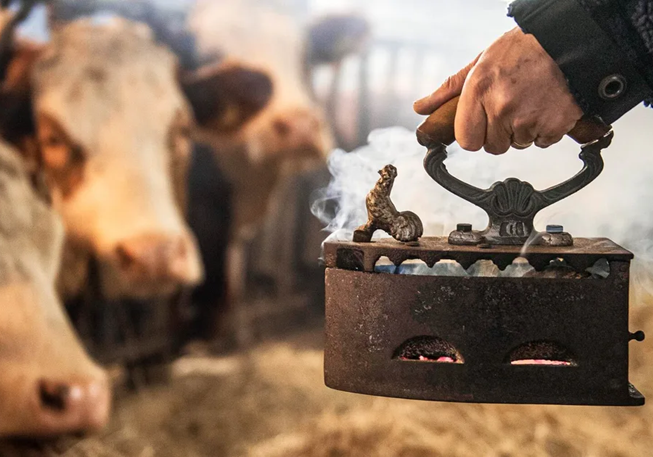
Incensing in the barn
Dreimulnåcht – The Food
After the incense and prayer, the meal is of particular importance: it is actually the most solemn dinner of the year, because on Christmas Eve the dinner is solemn but cold. Warm food is also served on New Year's Eve, but due to the exuberant atmosphere and the lack of devotion it is not so festive.
The Dreimulnåcht has precise specifications for the dishes and the sequence of dishes: As the name suggests, three (warm) courses are served. Food must “swim” in clear liquid, or be soaked and rich.
At the festive, three-course meal, we like to serve: a clear soup with an accompaniment, a main course (cooked smoked meat, roast pork spiked with Frankfurter sausages, beef roulades or similar) and a dessert, which is also warm and soaked (“Bsoffene Liesl”) or is very sumptuous (cream cake, choux pastry fritters with whipped cream).
Typische Speisefolge in derDreimulnåcht
Afterwards there is a cosy get-together, and cards (Tarock or Schnapsen) were often played afterwards.
Popular card games in Joglland
On the Origin of the Word "Dreimulnåcht"
For a long time, I thought about the Dreimulnåcht and where the word comes from. It was obvious that it had to have something to do with the three dishes. Except that in our dialect we don't say Muhl to the meal, but Måhl. Then it should be called Dreimåhlnacht. "Drei mul" is said to three times, so three times is eaten, which is also true. Then I found an entry in the journal for Austrian folklore (Zeitschrift für osterreichische Volkskunde). Organ of the association for Austrian folklore in Vienna. Edited by Dr. Michael Haberlandt. II. Year 1896. There one could read:
"In the north-eastern areas of Styria, the Epiphany is also called the 'Reichmahlnacht', and there is still a widespread custom there that the servants are served a rich meal on this evening, usually consisting of three dishes, including roasts. In Pöllau and Vorau around, the Epiphany itself is called the ,Sieben‘- or also ,Neunrichteltag‘, because on this day the meal consists of seven or nine dishes."
The Dreimulnåcht used to be called Dreirichteltag (3 times preparing a meal) or Reichsmahlnacht (night of rich meal). Epiphany was formerly known as 'Gebnacht' (giving night). The Gebnacht is a night in which food or milk (porridge) ('Bertlmilch') ('Bertlmilch') is (was) set out for the beings of midwinter, usually the Percht. But we didn't have that because my mother is not superstitious.

So-called Berchtmilch or Pertlmilch
Peter Rosegger, the famous local poet from Styria, writes further in Spaziergänge in der Heimat (Walks in the Homeland), 1894 about Epiphany Night in Joglland:
“During the festivals, the food is very sumptuous, so it is said that on Epiphany nine different cooks (porridge) must be eaten in each house; A long time ago, the Jockler (Jogler) are said to have enjoyed no fewer than three meals that evening, of which the Epiphany is still called the Dreimahlnacht (Three Meals Night) today.”
The spoon stuck in the Perch meal was used in some places as a (spoon) oracle in the so-called Lö[oe]selnächen (Loss Nights), which include New Year's Eve and Christmas Eve as well as Epiphany. In Munich, the Dreikönigsdult (Epiphany fair) (so-called Gebnachtdult) used to be held at Marienplatz, and the Dreikönigsmarkt has taken place in Villach every year since 1432. At that time, it was held as the Kathreinmarkt and developed from a cattle to a grocer and small trader's market, which it is today. As the first event of the year, the Dreikönigsmarkt is ascribed great symbolic power by the organizers even today:
"If the market brings good business, it is said that the other annual markets are also very profitable".

Epiphany Fair in Villach (Source: villach.at)
Budelmuada (Budelmutter)
But anyone who thinks that the Dreimulnåcht is already over with incensing, good food and card games is wrong.
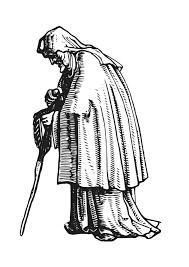
Old depiction of the Budelmuada, year and artist unknown
Because then a special figure often appears – the Budelmuada. She is also called Budelfrau, Budelweib or Budelnandl and is also written with a P instead of a B. She is an old, hunchbacked woman and usually appears on Dreimulnåcht after dinner. The Budelmuada wears a wide, long skirt and a headscarf – all in dark colours. She must not be recognized under any circumstances; her headscarf is so pulled down over her face and she walks in such a stooped posture that you never get to see her face. She never speaks – at least not in our area. Elsewhere, she offers good wishes for the new year with the words
"Greetings, I'm the Budelmuatta. I wish you a good year and stay healthy!“
The Budelmuada carries apples, nuts, tangerines and sweets (often from the Christmas tree) in her apron or in a bag, basket or back basket and lets them roll on the floor of the room. She knocks out the corners of the room with a stick or a broom to drive away the evil spirits. Sometimes she "accidentally" hits the leg of someone sitting at the table. But her charisma is usually “good-natured and mysterious”.
Of course, the Budelmuada can also come to visit before dinner, because she can't be everywhere at the same time!

The so-called Buglkraxn (knapsack), it used to be made from willow by the farmers themselves and used to transport the mowing, hay, or straw. Sometimes the small children were allowed to be carried around with it by their grandfather

The gifts of the Budelmuada are very similar to those of Saint Nicholas
In some villages, the Budelmuada does not enter the house until the lights are off. In the dark kitchen or living room she then also pours her gifts on the floor. Of course, this makes it even harder to recognize her face. The sweets and other gifts are also swept around with a broom. This is also to drive away the evil spirits. Then the sweets are picked up by the children and often eaten right away.

Depiction of the Budelmuada, artist and age unknown
The Budelmuada does not only appear in Joglland (Wenigzell, Fischbach, Vorau, etc.) but also in neighboring Burgenland and Lower Austria (the so-called border triangle). Also, in Weiz, Oberdorf near Weiz, in the Feistritztal, in the Gasen, in St. Kathrein am Offeneck, Fladnitz, Schildbach near Hartberg and many other places the Budelmuada comes into the house on Epiphany Night. However, her appearance is limited to the (north)eastern part of Styria – as far as I know she does not appear in western, southern, and upper Styria.
V.l.n.r.: Weizer Budlmuattan mit Maske, Budlmuada in Schildbach und Budlmuattan aus Gasen.
The fact that the Budlmuada wears a mask is a more recent phenomenon, but she still has to walk bent over. But where does the name Budelmuada come from and what is the meaning of "poodles"?
The Name of the Budelmuada and the "Einibudln"
Budeln and pudlen are old words that are no longer used very often, most likely in connection with the Budelmuada. I can remember that we often wore aprons when picking windfall in autumn, into which we picked the apples and pears, forming a sack with one hand. If the sack didn't hold up or was accidentally let go and everything fell to the ground, my grandmother would say: "Oje, hiaz sein ålle owipudlt...!" (meaning "Oh dear, now they are all have rolled down...!" Or when the filled bags of pressed fruit were emptied onto the trailer, they "budelten" in there as well. "Budeln"as a verb therefore presupposes round objects such as apples, pears and nuts and is accompanied by a certain noise. It has the meaning of pouring, dropping something that then rolls around.
"Budeln" can be derived as follows: Indo-European: *beu- (2), *bū̆-, *bʰeū̆-, *bʰū̆- (blow, swell) -> something stuffed
Germanic: *būdila-, *būdilaz ( st. M. (a): nhd. pouch (M.) (1); ne. pouch (N.); RB.: afries., as., ahd.; E.: s idg. *beu- (2), *bu-, *bʰeū̆-, *bʰū̆-, V., blow, swell, Pokorny 98; W.: afries. būdel 1, st. M. (a), pouch ( M.) (1), bag; saterl. bul; afries. bēdel 1?, st. M. (a), pouch (M.) (1); as. būdil 1, st. M. (a), pouch (M.) (1); mnd. būdel, M., pouch, bag; ahd. būtil 12, st. M. (a), pouch (M.) (1), purse, purse (F.) (1 ); mhd. biutel, st. M., st. N., bag (M.) (1), bag sieve, bag; nhd. bag, M., bag (M.) (1), attached bag, DW 1 , 1750; L.: Falk/Torp 275, EWAhd 2, 478, Kluge see bag)
This means that the meaning of the word that we still use today was already defined at the time when a common Germanic language was still spoken (1000-500 BC Germanic is said to have originated). In Old High German it was already called būtil (bag, purse) and in Old Frisian būdel also for pouch, bag (in German: Beutel). In the Low German yearbook 1918 to 1920 the bud is the bag (Beutel): budel = bag budelbratzen = bag clasps budelsnidere = pickpocket (the one who cuts open the sack) vrouwenbudel = woman's bag (handbag?)
It is obvious that the Budelmutter has her treasures in her bag, which she may even have formed out of her robes like we used to pick fruit, or that she carried some other bag with her. The word "Butte", which the Budelmuada sometimes carries with it, also comes from the same Germanic word *būdila(z). Of course, there has to be a verb to go with it – budeln (pour out something, that rolls around then). The fact that the B in the Budelmuada is sometimes written P or B is related to the Germanic sound shifts, but also to regional differences. For example, the Berg (means mountain) used to be written perc and then perg:
G: /*bʰ/→/*b/
V: /*p/→/*b/ 3 /*b/→/p/ dt. Berg → zimbr. Perg
Mutter/Muatta/Muada is self-explanatory (from Indo-European *mātér, *meh₂tèr, *méh₂tōr).
In Burgenland, the Budelmuada is often also called Budelmoam or Budlnandl:

The mask smithy Koller strives to maintain old customs in Wolfau (Source: FB Maseknschmiede Koller)
Moam comes from the Muhme, which is an older German kinship designation and usually means aunt (especially mother's sister) or cousin but can also denote general closeness.
mā̆mā, *mammā Mutter (F.) (1); ne. mother (F.); RB.: Pokorny 694; Hw.: s. *mā- (3); E.: s. *mā- (3); W.: gr. μάμμη (mámmē), μαμμία (mammía), F., Mutter (F.) (1), Großmutter; gr. μάμμα (mámma), F. (Vok.), Mama; lat. mamma, F., Mutterbrust; ae. mamme, sw. F. (n), Brustwarze; lat. mamma, F., Mutterbrust; ahd.? mamma* 1, sw. F. (n), Brust, säugende Brust; nhd. (ält.) Mamme, F., Brust, Mutterbrust, Euter, DW 12, 1519; germ. *mōmō-, *mōmōn, sw. F. (n), Mama, Mutter (F.) (1), Muhme; an. mōna, sw. F. (n), Mutter (F.) (1); germ. *mōmō-, *mōmōn, sw. F. (n), Mama, Mutter (F.) (1), Muhme; afries. mōie 1?, sw. F. (n), Muhme; germ. *mōmō-, *mōmōn, sw. F. (n), Mama, Mutter (F.) (1), Muhme; as. moma 1, st. F. (ō)?, sw. F. (n)?, Muhme; germ. *mōmō-, *mōmōn, sw. F. (n), Mama, Mutter (F.) (1), Muhme; ahd. muoma 16, sw. F. (n), Muhme, Tante, Schwester der Mutter; mhd. muome, sw. F., „Muhme“, Mutterschwester, weibliche Verwandte überhaupt; nhd. Muhme, F., „Muhme“, weibliche Seitenverwandte, DW 12, 2644
Nandl is a common nickname for Anna. But there is something more behind it:
*nana (Indo-European) means mother, aunt, nurse. The word is a common word for mother, aunt, and wet nurse, the first women to take care of an infant. Since it is so easy for a small child to say, it has also been used since time immemorial. Nana and mama are words slurred by babies unconsciously. Nandl is a diminutive of this word, so Muatterl, Mütterchen (little old lady). Old women like to be called that.
A special case in Burgenland is the Hodinandl in Burgenland, whose name comes from the Hudel (rags, scraps of cloth), which also the Berigl in the Salzkammergut wear (more on this in the article "Glöckeln" and "Berigln"). The Hudel was called Hodel in Franconian, and in the Franconian period there were the first German settlers (Swabian and Bavarian) from the Frankish Empire in the area of northern East Styria and the bordering Burgendland and Lower Austria. Charlemagne and his son Louis the Pious promoted the eastern settlement of the empire, and so those 100 hooves were given to Mosogouuo from the former royal property near Vuitinesperch for loyal service, between the Masenbergstock, the Wechselstock, the Bucklige Welt, and the Fischbacher Alps (Vorauer Basin) and today form the core of Joglland. Before that, according to Fritz Posch, gothic, alemannic, celtic, and slavic settlements can be proven in this area. In Eastern Styria in Fladnitz, the Budlmuada is called "Perschtlmuada" and is thus set directly with Frau Perchta by name. In any case, the maternal and good-natured is strongly emphasized in the Budelmuada.
What is behind the "einibudeln" (= pouring in gifts) and "knocking out" corners?
The fact that the Budelmuada knocks out all four corners of the room corresponds to the symbolism of the four corners of the table, which probably indicate the four cardinal points and thus the entire area, writes Leopold Schmidt in his article "Zu den Berchtengestalten des Burgenlands". The bad spirits and the winter should be driven out with it, and fertility and luck should come in. Also in Hungary, before or during the Christmas dinner, the householder throws nuts in the four corners of the room as a sacrifice or defence or to get rich and have enough of everything. According to Karoly Gaal, it was customary in southern Burgenland until around 1900, and in the Pinkatal even until 1925, for men to throw nuts in church during Christmas mass. Only men were allowed to do that. The clergy then abolished it. Of course, there is the symbolism of the four cardinal points, e.g., when the house is circled while smoking in Austria. In Lower Austria e.g. is specially smoked at the four corners of the house to the outside. When “sowing” nuts and apples into the living room on New Year's Eve in the Gottschee, no one paid attention to a particular direction of the throws. That would hardly be possible when throwing through a door gap. The throwing was visibly like the scattering ejection as when sowing in the field.
Throwing in objects unseen as much as possible is also a threshing custom in various parts of Austria (especially in Upper Austria and Lower Austria), but also as far away as Oldenburg. They are symbols that are mocking today but were once perhaps as beneficial as the Midwinter Woman's nuts. Even the name of Budeln appears there. The end of threshing was also usually around Christmas time. Budelmuada used to appear on Christmas Day morning and New Year's Day as well. An isolated statement from northern Lower Austria reports that in Waldenstein, district of Gmünd, before 1890 apples and nuts were rolled in at the door by the "Christ Child". Swiss "Kläuse" often threw their gifts, nuts, apples, etc., through a gap in the door into the room. The mysterious way that gifts are thrown into the room without the donor being seen is also reflected in the Swedish "Julklapp". According to Leopold Schmidt, there could be a relationship between the "pouring in " of the gifts at the door and the Nordic "Julklapp". With the Julklapp, which is particularly popular in Sweden, people knock on the door or window ("klapp") on Christmas Eve and the time around it, throw the gift in (the doors and windows used to not always be locked) and the gift dispenser is there quickly disappeared again so that he remained unrecognized. The "Julklapp" has been described since the 17th century. Before that, the Julbock brought the presents. Even today in Sweden, on Christmas Eve, the doors and windows are left open so that the presents can pour in. Often just a tied straw figure or a piece of wood with a saying or poem attached was thrown into the room as a joke, and then you had to guess who the "gift" came from.

Julklapp, the log remained
According to Schmidt, the secret throwing in of the fruits by the budel figures is a pronounced custom of blessing, which determines the overall course of the fertility year, as the budel mother assures “luck”, namely the blessing of the chickens and apparently also the blessing of children in a deeper sense. She guarantees happiness and fertility for this next year that begins with her coming. The customs of the Budelgestalten are of great intimacy. These are not performances like those of the Perchten processions in western Austria. It can only be spoken of as masking in rare cases: Usually it is just a disguise. This female character is almost always played by women, sometimes by those closest to the family, sometimes by those who are a little further away, who then look after several houses in the village. This is not surprising given the distances between the farms in Joglland. In Leopold Kretzenbacher's "Lutzelfrau und Pudelmutter. Ein Artikel zum Sagenkunde des Burgenland" the following can be read in a report from Pöllau in eastern Styria about the Budelmuada:
"As in the evening before Nikolai with Barthel, St. Nicholas comes along and at night puts nice and good things in the plates and shoes of good children that have been put out by the window, then on the evening before St. Epiphany, the budelmother, a very wild figure, thick and shaggy, and her robe held up with a rope around the middle. She has nuts in her apron, asks the children if they pray and if they know the catechism, then lets her nuts roll out of the apron onto the raft and spills them on the floor of the room.”
And further:
"In the Burgenland-Northeast Styrian border area of Hartberg, this lady drives up in a noble way with a horse-drawn carriage to the children's survey: The Pudlmuatta appears on the eve of the Epiphany. She hands out fruit such as apples, nuts, etc. to the good children, but only potatoes turnips and rods to the bad. They say their team is standing in front of the door (carriage with a team of goats)."

The so-called Kobelwagen was the most common means of travel for women in the Middle Ages
In the past, the Budelmuada also appeared without its originally frightening appearance. She then appeared as an "old, white-clad mother" and fulfilled the function of the Christ child in such a form in the three-country region (Styria, Burgenland, Lower Austria) even on Christmas morning under the name "Pudlmutter" "as an old but vigorous woman". Karl Weinhold calls the Budelmutter a “Christmas mask" and also describes the process of giving Christmas presents through her:
She appears with a knapsack on her back and a rod in her hand in houses where there are children. She enters slowly and asks the father of the house: "Well, where is it bad child? Who doesn't like to pray?" All the children pray out loud and the Budelmother says happily: "Look, look, holy night, good people, good Christians! I'm satisfied." She distributes nuts, apples, pears, even small money, and leaves the house blessing everyone.
Weinhold adds the important remarks:
“But the Budelmother is also a name for the invisible P e r ch t e. The children disappear from a house that is kept unclean at the holy time. Invisibly, she passes spindles through the window to be spun over.”
This shows the responsibility of the Budelmuada in the spinning room, the so-called Spinnstubenverantwortlichkeit as in the case of Frau Percht, who meticulously makes sure that all the flax has been spun away by Christmas and that there is order everywhere. Otherwise, she could get very angry and uncomfortable!
From left to right: Spinning wheel from the Stübing open-air museum, Icelandic depiction of a spinning wheel, hair room in the Vorau open-air museum
"It remains essential",
writes Leopold Schmidt about the Berchten figures,
"that its old cloak masking, along with its weighty change between black and white cloaking, has been retained. The silent, gift-bearing female figures, also depicted by women, have travelled and survived for very long periods of time in this simple way. "
This two-facedness is typical of the woman Perchta, who appears first as a dark, punishing, and ugly woman and then again as a white, light and good-natured figure, just like the Lutzl in Burgenland and the Budelmuada show similarities and at the same time ambivalences.

Two-faced Percht, here Gasteiner Perchten
Evidence for the Budelmuada
In 1853 Karl Weinhold wrote that the Budelmuada had been common for Lower Austria and for East and Lower Styria for a full century.
"[...] the 'Budelfrau' or 'Pudelmutter' of Lower, Upper Austria and Styria is a woman portrayed by a man."
(Friedrich Johann Fischer, Masken und rituelle Androgynie in Salzburg im 17. und 18. Jahrhundert, in: Österreichische Zeitschrift für Volkskunde, Band 69, Wien 1966)
Irene Thirring-Waisbecker reported from Sopron (Ödenburg, Odinburch anno 859) in 1896:
"On December 6, the children are often frightened by a hooded Santa Claus, who rarely brings them anything; instead, the Lutzelfrau or Pudelfrau 'poodles' (Ed.: rolls in) all kinds of sweets or fruit at the door on December 13 (Lucia)."
Of course, one has to say that there was hardly any customary research and no well-developed literature in the population. Therefore, evidence is difficult to find. While the first mention of Perchta appears around 1200, the word "Perchten" is not used until centuries later. A reference to their entourage appears in 1468, but the members are not called Perchten, nor do they explicitly resemble Perchten as we consider them today.

Frau Perchta in in different representations
But the originals were always – and still are – wandering in the epicenter of the Budelmuada, Joglland!
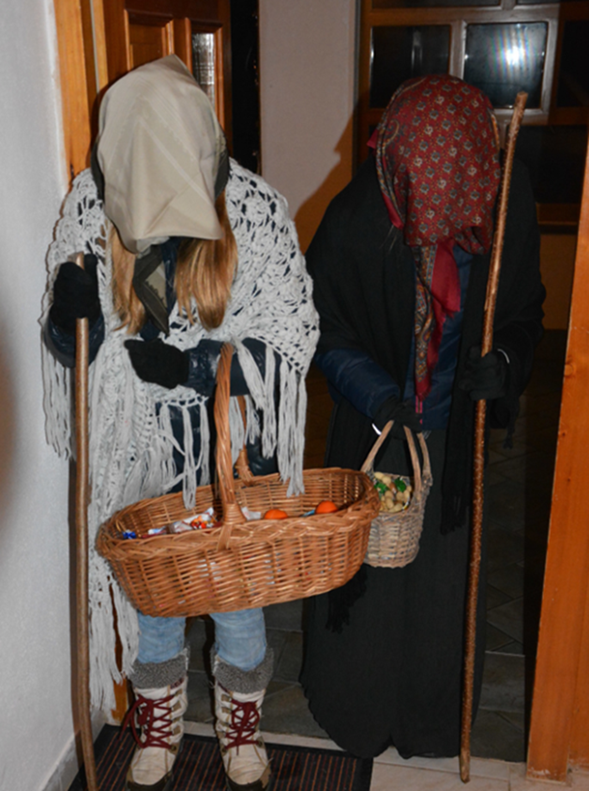
Children from Wenigzell disguised as Budelmuada
*https://www.servusmarktplatz.com/p/Murtaler-R%C3%A4ucherpfanne-IHS/SM121003/?gclid=Cj0KCQiA5NSdBhDfARIsALzs2EDJmSNvB_rS0gjRglr-i9XY-6fN6y7krJ42_sHJkzaSB9Y5AtCHjEoaAnPwEALw_wcB
Further Sources:
Leopold Kretzenbacher (1951): Lutzelfrau und Pudelmutter, Ein Beitrag zur Sagenkunde des Burgenlandes, Burgenländische Heimatblätter, Graz.
Leopold Schmidt (1951): Berchtengestalten im Burgenland (Mit einer Verbreitungskarte), Burgenländische Heimatblätter, Wien.
Leopold Schmidt (1952): Zu den Berchtengestalten des Burgenlandes Materialnachlese, Motivbeziehungen, Problemvorschau, Burgenländische Heimatblätter, 1. Teil, Wien.
Leopold Schmidt (1952): Zu den Berchtengestalten des Burgenlandes Materialnachlese, Motivbeziehungen, Problemvorschau, Burgenländische Heimatblätter, 2. Teil, Wien.


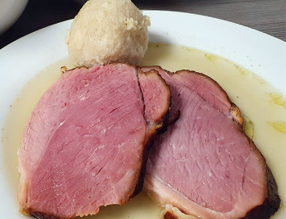
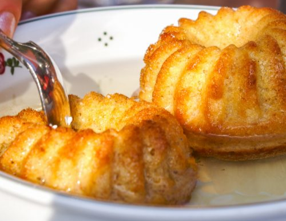


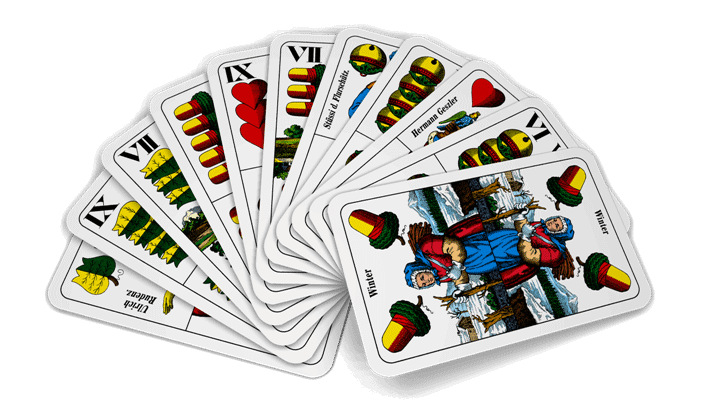


































Comments